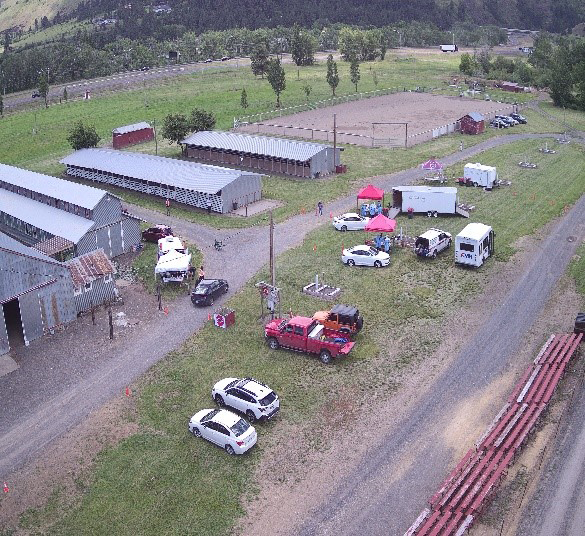Rural Emergency Medical Services (EMS) Units in Oregon Deploy to Support At-Risk Communities During the COVID-19 Pandemic
Oregon
2020
Background:
Over the course of the COVID-19 pandemic, the Oregon Department of Human Services (ODHS), Oregon Health Authority (OHA) and the COVID Response and Recovery Unit (CRRU) have collaborated with frontier, rural and urban emergency medical services (EMS) assets to provide non-traditional support for at-risk groups, including immobile, medically fragile, incarcerated, and migrant populations. Local EMS and state-contracted EMS ambulance agencies proved to be an essential asset in successfully supporting mass testing, vaccination efforts, surge staffing, and patient monitoring, all of which fall outside their conventional emergency treatment, triage, and transport roles.
Response Activities:
 ODHS and OHA engaged local EMS responders in COVID-19 response efforts because EMS is familiar to and trusted by at-risk populations throughout the state. Oregon’s Hospital Preparedness Program (HPP), established through the support of ASPR’s HPP cooperative agreement, was crucial in facilitating the partnership between OHA’s HPP coalitions and rural EMS assets and ultimately, their efforts to support at-risk communities. State and local public health first relied on EMS assets to support targeted testing and contact tracing (which also involved the CRRU) for essential workers in meatpacking and agricultural plants with large migrant and seasonal farmworker populations. Responders were asked to test entire shifts of workers at the request of local public health authorities to identify and curtail outbreaks.
ODHS and OHA engaged local EMS responders in COVID-19 response efforts because EMS is familiar to and trusted by at-risk populations throughout the state. Oregon’s Hospital Preparedness Program (HPP), established through the support of ASPR’s HPP cooperative agreement, was crucial in facilitating the partnership between OHA’s HPP coalitions and rural EMS assets and ultimately, their efforts to support at-risk communities. State and local public health first relied on EMS assets to support targeted testing and contact tracing (which also involved the CRRU) for essential workers in meatpacking and agricultural plants with large migrant and seasonal farmworker populations. Responders were asked to test entire shifts of workers at the request of local public health authorities to identify and curtail outbreaks.
In addition, ODHS and OHA allowed EMS providers to test for COVID-19 as well as administer COVID-19 vaccines. These efforts were successful, given that EMS assets were among the first to be vaccinated and are generally mobile; therefore, the EMS assets were equipped with the capabilities needed to deploy to rural areas and provide support to youth foster homes as well as populations that are homeless, incarcerated, or medically fragile and immobile. While Oregon already had a statewide mass vaccination plan, at-risk populations have historically not been as responsive to local or state government messaging and initiatives as the general population. As a result, public health agencies relied on EMS responders to reach vulnerable communities. As of August 2021, there have been over 71 missions for targeted vaccinations of these at-risk populations to address logistical difficulties.
areas and provide support to youth foster homes as well as populations that are homeless, incarcerated, or medically fragile and immobile. While Oregon already had a statewide mass vaccination plan, at-risk populations have historically not been as responsive to local or state government messaging and initiatives as the general population. As a result, public health agencies relied on EMS responders to reach vulnerable communities. As of August 2021, there have been over 71 missions for targeted vaccinations of these at-risk populations to address logistical difficulties.
Finally, frontier, rural, urban, and state-contracted EMS assets provided support to long-term care facilities (LTCFs) and nursing homes. Given high levels of absenteeism among health care workers who were exposed to the virus and subsequently needed to quarantine, the need for surge staffing became apparent. EMS assets were deployed to evacuate facilities, assess patients, and either transport or treat residents on site until local public health/ODHS could identify more stable staffing resources.
Impact:
After expanding the mission and scope of rural EMS units during the COVID-19 pandemic, OHA and CRRU increased rural communities’ access to care and provided services and resources that were otherwise beyond reach for at-risk populations across the state. Previously, EMS was not utilized as heavily as an asset to assist with mass public health initiatives such as testing and vaccinations; however, the COVID-19 pandemic has allowed local public health agencies to see and expand the value in their engagement.

